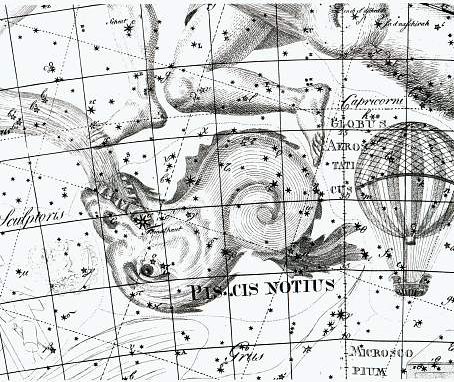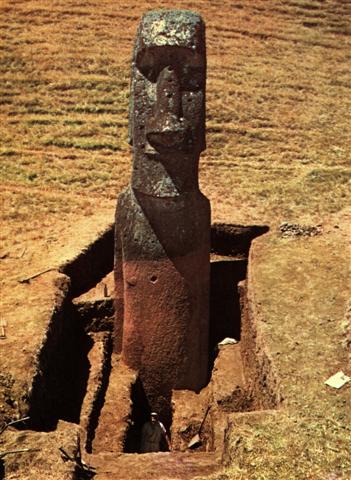We can begin by repeating what Manuscript E earlier has revealed for us about those 4 important stars between Ankaa and Rigel:
29 Ko Te Rano A Raraku should be around (29 - 13) * 6 = 16 * 6 = *96 right ascension days after Rigel. I.e., according to my assumed epoch for rongorongo there ought to be some great star around right ascension day *78 + *96 = *174 (254). But we have already arrived at the plausible right ascension day *163 (= 254 - 91) for 29 Ko Te Rano A Raraku:
On side a of the G tablet right ascension day *163 coincides with Ga4-16:
Reasonably we should, indeed, let 29 Ko Te Rano A Raraku be associated with the revivifying stream of fresh waters coming down from the Urn of Aquarius in order to reach the eager Mouth of the Fish
and then the opposite situation certainly ought to be at the Dry Shallow Basin (Al Kes):
Here (at Rano Raraku) 'the Earth gave birth' to the great stone statues:
... Based upon the fact that toko in New Zealand also means 'rays of light', it has been suggested that the original props which separated and held apart Sky and Earth were conceived of as shafts of dawn sunlight. In most Polynesian languages the human and animate classifier is toko-, suggesting a congruence of semantic and symbolic meaning between anthropomorphic form and pole or post. Tane as First Man and the embodiment of sunlight thus becomes, in the form of a carved human male figure, the probable inspiration for the moai as sacred prop between Sky and Earth. The moai as Sky Propper would have elevated Sky and held it separate from Earth, balancing it only upon his sacred head. This action allowed the light to enter the world and made the land fertile. Increasing the height of the statues, as the Rapa Nui clearly did over time, would symbolically increase the space between Sky and Earth, ensuring increased fertility and the greater production of food. The proliferating image, consciously or unconsciously, must have visually (and reassuringly) filled the dangerously empty horizon between sea and land, just as the trees they were so inexorably felling once had ... ... Métraux quotes a Rapa Nui legend in which carvers from Hotu Iti (eastern sector) journeyed to the western sector to seek the advice of a master carver. They were perplexed about how to resolve the difficult problem of carving the statue neck. He advised them to seek the answer by viewing their own bodies. They did so, and discovered that the model for the statue neck was the penis (ure) ... |
|||||||||||||||||||||||||||||||||||||||||||||||||||||||||||||||||||||||||||||||||||||||||||||||||||||||||||||||||||||||||||||||||||||||||||||||







